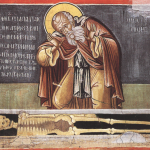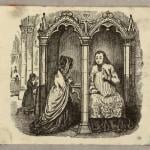THE “CREATIVE CLASS,” AND THEIR CREATOR: Seattle is also a “creative class” city. This means that it’s got lots of techies, artists and assorted similar beasties; it’s tolerant and diverse and all that sort of thing; and it’s gaining in population. Richard Florida, professor of regional economic development at Carnegie Mellon University in Pittsburgh, came up with the term “creative class” after investigating why so few of his students wanted to stay in Pittsburgh after graduation. He tried to figure out why some cities are booming and others are slumping, and hit on a combination of night life, artsiness, gay-friendliness, lots of jobs, and a general sense of excitement and openness to change.
According to his students, Pittsburgh flunked. “People with new ideas in both Pittsburgh and Detroit were shunned,” he told Salon.
Florida’s research seems to contradict theorists like Robert “Bowling Alone” Putnam, who hypothesized that tight-knit civic groups led to economic success as well as personal satisfaction. Florida says when he asked “creative class” types, they said, “No, that’s not what we want. We want to be quasi-anonymous, we want a community in which we can be ourselves, we want a community which we can define ourselves, we can create our own identities.” This may be part of the reason that the growing cities usually had lower church attendance rates and lower rates of involvement in community groups than the cities whose populations and economies were stagnating. Florida’s research, frankly, makes the “creative class” sound like self-centered jerks, like baby birds hanging their mouths open waiting for people to drop in little entertainment-worms. But while there are all kinds of questions that can be raised about how much his theory actually explains economic trends, I think it’s pretty clear that the “creative class” (which has strong overlaps with the “bobos”) is a real phenomenon. Seattle does feel vibrant, eccentric (if often in a safe, hygienic kind of way), and full of stuff to do.
But at the wedding reception, I was seated next to a woman who offered a different perspective on creative vs. stagnant cities. I can’t recall whether she worked, or where, but her husband was a programmer for Microsoft–one of Florida’s techie creatives. Like Florida’s students, she had left Pittsburgh (I can’t remember if she grew up there or just lived there for a time as an adult), and she found Seattle much more alive and exciting–because of the vivid Catholic community she’d found. She acknowledged that Seattle “isn’t as churched a region”; but where Pittsburgh’s Catholic parishes felt (to her) ingrown, insular, their Catholicism a matter of inherited culture and habit rather than heartfelt, passionate belief, in Seattle she’d been able to find a parish full of people who were on fire for Christ.
I say this not to knock Pittsburgh–for all I know, there are similarly invigorating and springtime-like parishes there. But I present this woman’s Seattle vs. Pittsburgh experience in order to a) warn of the dangers of making Catholicism a culture rather than a faith, and b) point out that the creative class’s preference for neon nightlife and artsy coffeeshops may bear the seeds of a deeper longing for an evangelizing, hopeful, active Christian faith. The creative class wants something alive, and doesn’t place a high value on familial ties or duties. Too often, when it comes to faith, they’ve been offered a choice between ossified cultural Catholicism (or Lutheranism, etc.) and church-as-entertainment. The Seattle vs. Pittsburgh contrast can perhaps be thought of in Jaroslav Pelikan’s terms: “Tradition is the living faith of the dead; traditionalism is the dead faith of the living.” Perhaps ossified cities should take the “creative class” theory as a spur to transform the latter into the former. If the creative class is looking for something lively, there’s nothing like spiritual renewal.











